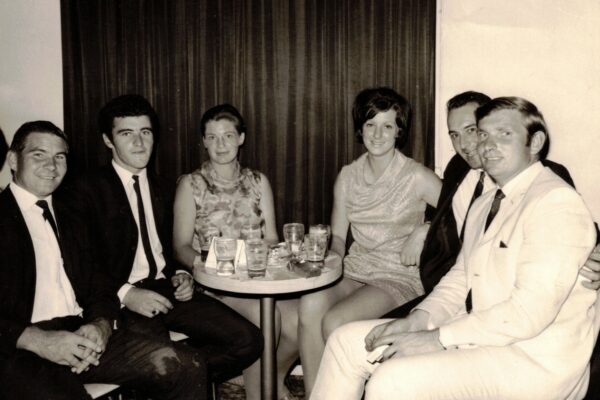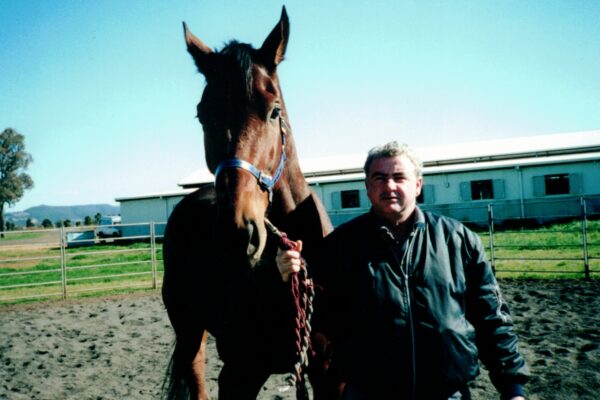Heavenly Horses
I confess I’d never heard of them until I actually saw them. We were traversing the Silk Road from East to West and after an exciting but arduous (‘bring your sense of humour’) journey we found ourselves near the Ferghana Valley of Eastern Kyrgyzstan and Uzbekistan. It was vividly spectacular.
Featured Image: Photo(s) courtesy of Sarah Howey.
Fellow professional Maitland veterinarian Digby Rayward is watching milking of the mare with rapt fascination. Mare’s milk is a vitally important commodity in the high country of Kyrghistan! It’s a very long way to the nearest supermarket! Digby might have known fermented mares’ milk provides ‘Kumiss’?; which is the local alcoholic brew! After the mild shock of the first sip its a nice thing to do around the fire in the Yurt at night!
Ferghana Valley Eastern Kyrgyzstan and near the Kamchik Pass, Uzbekistan
Dayuan (Uzbekistan) 130 BCE Ferghana Valley (highlighted) post-1991
To say the journey from Western China (Urumqi and Kashgar) via the Tuergate Port was ‘interesting’ would be the antithesis of hyperbole. It’s at very high altitude for a start (>4000m). Being western tourists we were processed quite quickly during the freezing night. Coming in the opposite direction there was/were a 5 kilometres long string of Chinese trucks queued up waiting for access across the border. These were returning from long journeys from as far away as Western Europe bringing much needed goods and chattels to the new consumers in modern China. Chairman Mao’s enemies-of-the-state capitalist roaders and running dogs are unleashed! It was the Silk Road revisited yet again in the 21st century; after 2000 plus years of successful trading both ways. Our first stop was a fascinating town ‘Naryn’ in Eastern Kyrgyzstan where we stayed at the ’English Boarding House’. The fare was limited because resources were restricted. We ate the best available.
Early morning herding flocks of sheep and goats through central ‘Naryn’
Stored water in the form of snow and ice is a major resource in Kyrghizstan
Fences and/or telegraph poles are a rarity in this country. The vista is magnificent.
Song Kul Lake; favoured summer destination of the ruling communist Stalin era hierarchy
Ancient history https://en.wikipedia.org/wiki/Ferghana_horse
Dayuan north of Bactria was a nation centered in the Ferghana Valley of present-day Central Asia. Even as early as the Han dynasty China projected its military power to that area. The Han imperial regime required Ferghana horses and imported such great numbers of them that the rulers of Ferghana closed their borders to such trade. That move resulted in a war when China prevailed. In 102 CE the Chinese required of the defeated Ferghana that they provide at least ten of their finest horses for breeding purposes and three thousand Ferghana horses of ordinary quality. However there are other views: the Records of the Grand Historian and Book of Han provide no description of Ferghana horses and as it seemed from these chronicles they were not employed in any known Han expeditions and campaigns. A slightly different version is given below. The truth may be soemwhere in between?
Chinese statuary and paintings as well as Bactrian coins and Tang Dynasty tomb figures (early 8th century) indicate that these horses had legs that were proportionally short, powerful crests and round barrels. The forelegs of the Chinese depictions are very straight resembling the Guoxia literally: “under the fruit trees” horse of present-day China. According to tradition these horses sweat blood giving rise to the name: “sweats blood horse”. Modern authorities believe that blood-sucking parasites caused sweat to get mixed with blood when the horses were worked.
‘“Modern researchers have come up with two different ideas for the ancient Chinese references to the “Blood-sweating” horses of Ferghana. The first suggests that small subcutaneous blood vessels burst as the horses sustained a long hard gallop. The second theorizes that a parasitic nematode, Parafilaria multipapillosa, triggered the phenomenon. P. multipapillosa is widely distributed across the Russian steppes and makes its living by burrowing into the subcutaneous tissues of horses. The resulting skin nodules bleed often, sometimes copiously, giving rise to a something veterinarians call “summer bleeding.”
Over 2,000 years ago two Chinese armies traveled 10,000 km to Ferghana to find ‘Heavenly Horses’, the finest mounts then known, apparently infected with a tiny worm causing them to ‘sweat blood’ from skin sores:
“Sometime earlier the emperor had divined by the Book of Changes and been told that “divine horses are due to appear” from the northwest”. When the Wusun came with their horses, which were of an excellent breed, he named them “heavenly horses”. Later, however, he obtained the blood-sweating horses from Dayuan [= Ferghana], which were even hardier. He therefore changed the name of the Wusun horses, calling them “horses from the western extremity”, and used the name “heavenly horses” for the horses of Dayuan.multipapillosa is thought to have been the cause of the “blood-sweating” of these famous and much desired horses from Ferghana which Emperor Wu of Han China (Wudi) renamed “Heavenly Horses” (c. 113 BCE). He sent an army of 40,000 men in 104 BCE 5,000 km to Ferghana but they were defeated.
Another army of 60,000 men was sent in 103 BCE and they managed to negotiate the acquisition of 3,000 horses; though only a few dozen were top class and only 1,000 made it all the way back to China in 101 BCE. However they reached an agreement that Ferghana would send two Heavenly horses each year to the Emperor. Lucerne Seed was brought back to China providing superior pasture for breeding and raising fine horses in China. They provided cavalry which could cope with the Xiongnu who threatened China.
The Han dynasty bronze statuette Gansu Flying Horse is most likely a depiction of this breed.
Horses in North America
It is intriguing to speculate on the re-introduction of horses into the North American Continent. Breeds such as the Palouse, Appaloosa and Paint Horse trace their origins back to the ‘Heavenly Horses’ on the steppes and plains of Asia. Many of these even today are ‘coloured’. We saw about 30% either skewbald or piebald. The expansion of Islam in the 5th, 6th and 7th centuries reached as far as modern day Western China. Ürümqi is the capital of the Xinjiang Uighur Autonomous Region of the People’s Republic of China in the North West. Kashgar is another important Uighur settlement. It appears Muslims took horses back to the Middle East, Eastern Europe, thence to North Africa and ultimately Moorish (Islamic) Spain. These horses were the means of transport for the subsequent Conquistador conquest and colonisation of South America, Central America and southern North America. Ultimately the Plains Indian tribes captured some of these horses and they became a fundamental part of their tribal culture in both war and peace. The Palouse River runs through Nez Perce country in Washington, Oregon and Idaho. The Nez Perce Nation successfully domesticated these horses and selectively bred them. The names of the different breeds are derivatives of the originally named ‘Palouse’ medley. Recent outstanding genetics research at UC Davis California and the Virginia Polytechnic Institute has shed much light on the inheritance of coat colour in horses. It may provide much needed clarity on the issue.
Multi-coloured ‘Heavenly Horses’ in Kyrgyzstan
Horses are run by families in family groups. Milk from mares is a vital resource. There are no fences.
The ‘milkman’ was initially bashful. Sarah had to win him over!
The ‘supervisor’ in the traditional but kitsch Kyrghyz felt hat is one of our mob; Digby Raward Note the treeless open landscape due to centuries-old overgrazing by mobs of sheep and goats as well as horses.
Hobbles seem to be universal in application.
This would be the equivalent of the Australian Stock Horse
Some of the locals also wear the felt hat. Others have adapted western customs.
Shaving is precarious. The water is extremely cold!
Traditional cooking the Kyrghyz way
The drink is ‘Kumiss’; fermented (alcoholic) mare’s milk. This is the equivalent of the ‘Kyrghyz Pub’ albeit a Muslim domain. Mounted warriors of old drank it for ‘Dutch Courage’ when on predatory pugnacious campaigns. The author failed the test miserably!
Open plan kitchen on the high steppes
Traditional Kyrghyz/Uzbek Yurts; mobile homes for the nomadic tribes
Homestay Kyrghyz style; the locals are extremely hospitable. It’s vital to do the right thing. I think that’s Sarah’s rear end? Familiarity is contemptible!
The preferred fuel-of-choice is dried Yak dung properly stored
Both sheep and goats are herded and grazed in tightly held flocks. It’s a system of cellular grazing over the centuries following available grass-feed. It has led to the obliteration of trees and destruction of habitat; much to the chagrin of the present-day farmers, herdsmen and shepherds. There is no shade and little cover. Wolves can raid at will from the high timbered lairs surrounding.
Stock is/are driven into fenced corals at night. Predatory timber wolves are enemy number one.
Sentinel Guard Dogs (Tibetan Mountain Dogs) are the antidote to the predatory Wolves. We saw this single magnificent creature in the high country. They are both fearless and courageous.
Yaks are also part of the perennial pastoral picture. They provide many elements of survival; not least fuel for the fires! Felt is a by-product.
Rock hoppers in Uzbekistan; Sarah right rear
Richly caparisoned stock horse in Samarkand, Uzbekistan
River Oxus
We were across before we knew it. Alexander would have taken longer over a much bigger river.
Alexander taming Bucephalus; was he a ‘Heavenly Horse’ (Akhalteke) as claimed?
Alexander didn’t have to push his ‘bus’ approaching Tashkent. Our German Mercedes model broke down after exceeding 3 million miles on the odometer clock. Our father-and-son Russian drivers managed to persuade us by sign language to push start. We won! Vodka was fuel for the drivers.
Eventually we made it to Tashkent. Within 10 minutes in Tamerlane Square (above) Sarah received two offers of marriage! Young Uzbek men were seeking an exit strategy to the West; so I’m told?










